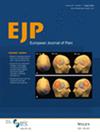Oxycodone and Morphine Use in Hospitals and Primary Care in Norway 2010–2021: A Nationwide Study
Abstract
Background
Increasing oxycodone prescribing and its association with opioid-related harms have raised concerns. In Norway, nearly 90% of opioids are prescribed in primary care, making primary care decisions important to overall opioid exposure. In-hospital use may influence primary care practices through several mechanisms. This study analyses oxycodone and morphine use in Norwegian hospitals and its association with primary care prescribing from 2010 to 2021, alongside a review of tender agreements for these medications.
Methods
Morphine and oxycodone, available in all relevant formulations, served as opioid proxies to compare covariation between hospitals and their catchment areas. We analyzed 2010–2021 procurement data from hospital pharmacies and primary care dispensing data from the Norwegian Prescription Database for all hospital trusts. Correlations between hospital and primary care morphine-to-oxycodone prescribing ratios were assessed using Pearson's r. Annual tender agreements were obtained from the national Hospital Procurement Organization.
Results
Hospital oxycodone use increased by 67.0% and primary care prescribing rose by 86.5%. Morphine use increased by 12.6% in hospitals but decreased by 23.2% in primary care. A moderate covariation (Pearson's r = 0.48) between hospital use and primary care prescribing was observed. Hospital tender agreements for morphine declined by 80%, while those for oxycodone remained stable.
Conclusions
Oxycodone use substantially increased relative to morphine in Norwegian hospitals and primary care. Prescription patterns show moderate covariation, suggesting a potential link between hospital and primary care prescribing, though causality remains uncertain. Tender agreements may contribute to prescribing trends in hospitals, with possible associations in primary care.
Significance
This study is the first to provide quantitative evidence of covariation between in-hospital use and primary care opioid prescribing across a national healthcare system. Despite recommendations favoring morphine, oxycodone prescribing continues to rise in Norway, with marked geographical variation. By linking procurement data, prescription patterns and tender agreements, our findings highlight the need to consider hospital practices and structural factors when addressing opioid prescribing. These results offer new insights into potential levers for opioid stewardship across care levels.

 求助内容:
求助内容: 应助结果提醒方式:
应助结果提醒方式:


